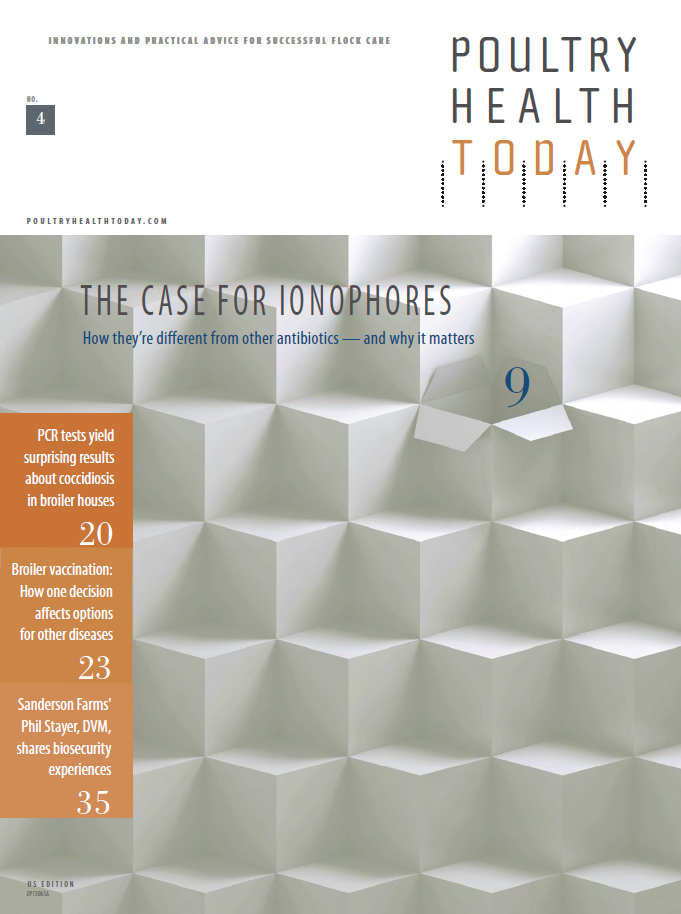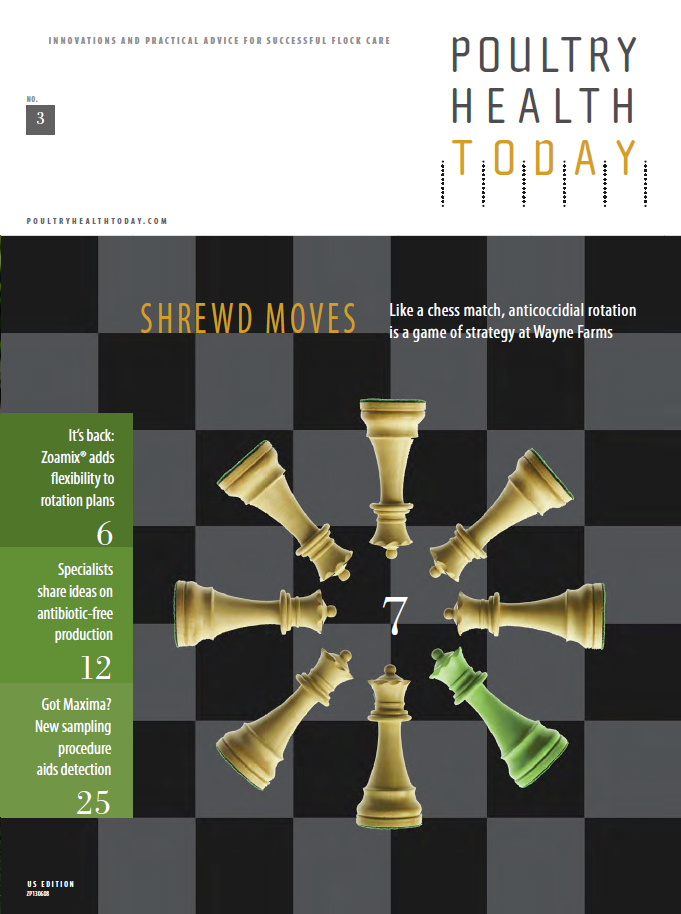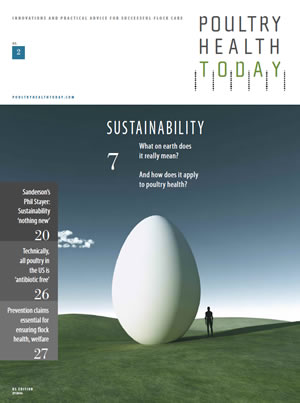

Field trials on two continents show practical, economic benefits of E. coli vaccine in broilers

Building on a 60-year legacy, Zoetis presented more than 20 papers and posters at the recent World Veterinary Poultry Association (WVPA) conference held in Nantes, France, and the American Association of Avian Pathologists (AAAP) conference in Chicago. Here are summaries of a few key presentations, all based on research aimed at discovering practical solutions for improved poultry health. For more news reports from AAAP and WVPA, visit poultryhealthtoday.com.
Recent studies on two continents have demonstrated that a modified-live vaccine reduced losses from Escherichia coli in broilers, even when the disease challenge was strong.
The studies were conducted on farms in the US and North Africa. "There were a variety of conditions, but one thing in common was a higher than normal E. coli challenge," Kalen Cookson, DVM, MAM, a technical services veterinarian for Zoetis, said at the WVPA conference.
In the US trial, investigators administered the vaccine Poulvac® E. coli to more than 4 million broilers at hatch. They then compared performance to unvaccinated chicks hatched the previous week that were treated in ovo with the antibiotic gentamycin.
Chicks that received Poulvac E. coli and
no gentamycin had a better adjusted feed
conversion, lower mortality after week
1 and fewer condemnations compared
to controls, yielding a US $0.51 (€ 0.39)
advantage per pound. They also had
significantly less disease and needed less
antibiotic treatment and for a shorter
duration of time (Figure 1), he said.
One of the field trials in North Africa involved two broiler houses with 8,000 birds each on a farm with high E. coli mortality. Investigators treated all birds with an antibiotic in ovo, and then vaccinated one house with Poulvac E. coli at 3 days of age. The other house was not vaccinated but was treated with enrofloxacin for the first 3 days of life.
At 40 days of age, vaccinated birds had lower total mortality, better bodyweight and a better feed-conversion ratio (FCR) compared to unvaccinated birds, Cookson said.
In another field trial in North Africa involving 15 different farms with a history of E. coli colibacillosis, no preventive in ovo or in-feed antibiotics were administered. Compared to controls, broilers vaccinated with Poulvac E. coli had an overall better average daily gain and FCR and fewer E. coli lesions. When antibiotic treatment was needed, it was necessary for a shorter duration, Cookson said.
"To our knowledge, this was the first study that employed a viral challenge to compare the efficacy of in ovo vaccine application devices for delivery of anh VT vaccine." TAY LOR BA RBOS A, DVM, MS , PHD, AC P V
More Issues















